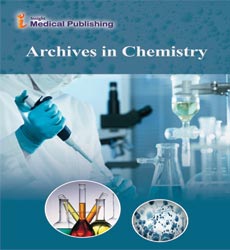Green Chemistry and Engineering
Piyasan Praserthdam*
Instituteof PharmaceuticalSciences, Kurukshetra University, Kurukshetra, India
*Corresponding author: Piyasan Praserthdam, Institute of Pharmaceutical Sciences, Kurukshetra University, Kurukshetra, India; Email: piyasan34@gmail.comCitation:Praserthdam P (2021) Green Chemistry and Engineering. Arch Chem Vol.2 No. 3:e005
Received date: June 04, 2021; Accepted date: June 19, 2021; Published date: June 26, 2021
Introduction
The pharmaceutical industry is continually seeking ways todevelop medicines with less harmful side-effects and usingprocesses that produce less toxic industrial waste. Merck andCodexis developed a second-generation green synthesis ofsitagliptin, the active ingredient in JanuviaTM, a treatment fortype 2 diabetes. This collaboration causes an enzymatic processthat reduces waste, improves yield and safety, and eliminatesthe necessity for a metal catalyst. Early research suggests thatthe new biocatalysts will be useful in manufacturing other drugsas well. Originally sold under the brand name Zocor®, the drug,Simvastatin, is a leading prescription for treating highcholesterol. The traditionalmultistep method to form thismedication used large amounts of hazardous reagents andproduced an outsized amount of toxic industrial waste withinthe process. Professor Yi Tang, of the University of California,created a synthesis using an engineered enzyme and a low-costfeedstock. Codex is, a biocatalysts company, optimized both theenzyme and therefore the chemical change. The result greatlyreduces hazard and waste, is cost-effective, and meets theneeds of customers. Several companies have been working todevelop plastics that are made from renewable, biodegradablesources. NatureWorks of Minnetonka, Minnesota, makes foodcontainers from a polymer called polylactic acid branded asIngeo. The scientists at NatureWorks discovered a methodwhere microorganisms convert cornstarch into a resin that is justas strong as the rigid petroleum-based plastic currently used forcontainers such as water bottles and yogurt pots. The companyis working toward sourcing the raw material from agriculturalwaste. BASF developed a compostable polyester film called"Ecoflex®." they're making and marketing fully biodegradablebags, "Ecovio®,"made of this film alongside cassava andcarbonate . Certified by the Biodegradable Products Institute,the luggage completely disintegrates into water, CO2, andbiomass in industrial composting systems. The bags are tear-resistant, puncture-resistant, waterproof, printable and elastic.Using these bags within the place of conventionalplastic bags,kitchen and yard waste will quickly degrade in municipalcomposting systems. Oil-based "alkyd" paints give off largeamounts of volatile organic compounds (VOCs). These volatilecompounds evaporate from the paint as it dries and cures andmany have one or more environmental impacts. Procter &Gamble and Cook Composites and Polymers created a mixtureof soya oil and sugar that replaces fossil-fuel-derived paint resinsand solvents, cutting hazardous volatiles by 50 percent.Chempol® MPS paint formulations use these biobased Sefose®oils to exchange petroleum-based solvents and make paint that'ssafer to use and produces less toxic industrial waste . Sherwin-Williams developed water-based acrylic alkyd paints with lowVOCs which will be made up of recycled pop bottleplastic (PET),acrylics, and soyabean oil . These paints combine theperformance benefits of alkyds and low VOC content of acrylics.In 2010, Sherwin-Williams manufactured enough of those newpaints to eliminate over 800,000 pounds. To explore more real-world examples of green chemistry, visit the US EPA website forsummaries of the Presidential Green Chemistry Challengewinners.
Open Access Journals
- Aquaculture & Veterinary Science
- Chemistry & Chemical Sciences
- Clinical Sciences
- Engineering
- General Science
- Genetics & Molecular Biology
- Health Care & Nursing
- Immunology & Microbiology
- Materials Science
- Mathematics & Physics
- Medical Sciences
- Neurology & Psychiatry
- Oncology & Cancer Science
- Pharmaceutical Sciences
